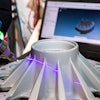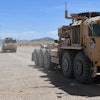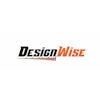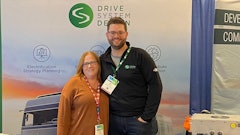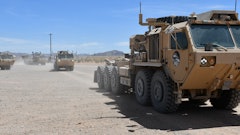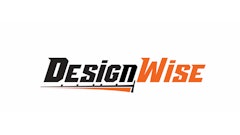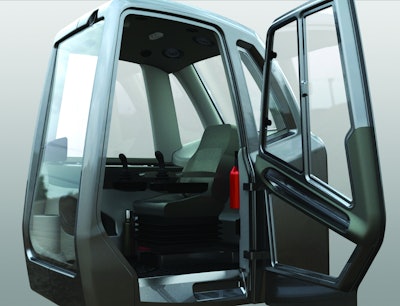
It all started in 2007. Exodus Machines Inc., Superior, WI, was founded by Bruce Bacon, co-founder of Genesis Attachments, a producer of mobile shears for the metal recycling industry. By December, Bruce had been joined by Jim Campbell, now VP of manufacturing, and Greg Bacon (quoted throughout the article), VP of sales, service and marketing, to establish a business plan and begin work on customer research and feasibility studies to build purpose-built wheeled materials handlers.
“When we went out and talked to the customer base, we found that they weren’t happy with the way they were being treated by manufacturers of other material handlers. All based outside of the United States, the machine manufacturers had long lead times and high costs for replacement parts and service. The customers also felt they weren’t being heard with suggestions for new features on the equipment,” says Greg Bacon.
With an established need in the industry, Exodus Machine Inc. was officially formed in April of 2008. It was decided that the company would never be sold to an outside company, and profit sharing and contributions to local charities are established as part of the company bylaws.
Only a month later, the company’s first employee, Adam Bennis, chief engineer, begins work on the machine design and development. The company worked together with local suppliers and design firms to develop the MX447; in fact, the entire machine was Wisconsin-built and is the only wheeled material handler designed and built in the U.S.
Machine specs
Born from blank-slate design, hundreds of hours were spent interviewing machine operators, maintenance personnel, equipment owners and managers to determine design parameters and machine features. The machine has been designed to be flexible and to be accommodating to a variety of operator types in the targeted market for scrap metal recycling. “As we reach other markets such as the waterfront or wood handling industry, we will build a machine tailored to them, but for now we’re focused on scrap metal recycling,” says Bacon.
The company was given the rare opportunity to build the machine from the ground-up. Using finite element analysis (FEA) and strain gauge testing to ensure durability, the engineers designed the machine structure with continuous welds, continuous chamfering and beveling to reduce stress concentrations. Oversized pins and bushings were used to go above and beyond industry requirements.
Finding suppliers can prove difficult with low machine volumes, and Exodus was no exception. “Sometimes there were only one or two manufactures able to supply us with the component we were looking for, and they typically wanted to deal in larger volumes,” says Bacon.
One of the most difficult components to find a supplier of was the machine’s wheel axles. Looking into alternatives, Exodus decided to use a planetary wheel drive instead of the traditional transfer case and rear end gear box with drive axles that attach to the wheel ends. “We feel like we came up with a better product as a result of that, so it worked out in our favor,” he says.
Exodus’ MX447 houses a John Deere 9.0L, 275 hp Tier III compliant engine system combined with a Parker IQAN computer system. The IQAN system monitors the hydraulic pump pressures, valve positions, and fluid temperatures as well as electronic inputs and outputs. Engine diagnostics include fault codes and hydraulic pressure spikes tracked either through the modem to a dealer or owner, or through an on-board system for the operator to monitor. The electronic control system is integrated throughout the machine to allow the base platform to be customized for each customer based on what features are needed for the specific scrap yard.
Parker also supplied its load-sensing control valves with post-compensation to allow oil sharing and pre-compensation to allow lower pressure functions to operate without going over relief. Two 75 gallon per minute (gpm) Bosch Rexroth pumps together supply 150 gpm to the machines main functions at 4,800 psi.
The Bosch Rexroth proprietary swing system is a closed-loop system with a dedicated 41 gpm pump and controller. Customers find the smooth, fast yet controllable boom swing to be a great feature unseen on competitive equipment models. The boom cylinders have regeneration capabilities to allow for fuel efficiency and higher productivity.
“With scrap material handling machines, you want as much reach as possible,” says Bacon. The boom is designed straight to allow the operator to take the load up as high as it can go. The Exodus boom reaches out approximately 50.5 ft. and extends up around 64 ft. “The boom reach is important for the operator to be able to stack piles high to get as much material as possible close to a shredder, for example. Also, a lot of yards are in more urban areas and don’t have a lot of land, so they must stack scrap piles high versus wide.”
Operator cab design
The cab structure on the Exodus MX447 is unique to the industry and many off-road machines. Exodus had been in conversations with Fiber-Tech, a Franksville, WI-based fiberglass composite component manufacturer, for the cab and body enclosure production for the salvage yard handler.
In January of 2009, Fiber-Tech approached Brooks Stevens Inc., a design firm based in Allenton, WI, with capabilities in design, prototyping, FEA testing and engineering. Brooks Stevens was approached because of its previous experience with crane-type body style equipment and Fiber-Tech’s need for help with the projects fast turnaround demand.
Brooks Stevens was chosen to take the initial design concepts of the body and cab exterior provided by Exodus and turn them into a fully engineered solution. The project required integration with Fiber-Tech and Exodus’ product development team for efficient collaboration and production of the cab structure—and eventually the body enclosures.
Unique to Brooks Stevens’ team was using fiberglass for the cab structure, as the company was used to traditional steel cabs for crane-applications. “The cab was going to be fiberglass over a tubular frame structure design,” explains Scott Micoley, Brooks Stevens’ program manager.
“This gave us the unique opportunity to give the cab a more automotive shape, something we hadn’t been able to do in the past,” adds Jeff Wierschke, lead project engineer for Brooks Stevens. “This allowed us to create a very attractive cab.”
The use of fiberglass material also allowed Exodus to achieve the forward-looking style to the machine they had envisioned. “We didn’t want our first break-out machine to look boxy and basic. People have been impressed with the next-generation look of the machine, and while that’s only the first step—obviously the machine has to also perform—it does help to spark their interest in learning about the machine. It gives the impression that the machine is going to be good,” says Bacon.
The joint cab design project took a tremendous amount of communication between the three companies. There was an established exterior visual design from Exodus, but details hadn’t yet been worked out in regards to fitting the cab to the frame or mechanical system. There was also no interior design established; only key cab interior components such as the seat, main controls, joystick and IQAN display that had to be incorporated into the design.
“We approached this project the same as any other cab project, by focusing on the operator,” says George Konstantakis, president, Brooks Stevens. Normally the company works from the operator’s perspective outward; this project simply asked for the designers to start from the outside using their size and attachment parameters and work inward.
Considering the tight development schedule the Brooks Stevens industrial designers worked quickly, going from thumbnail sketches directly into CAD. An ergonomic study buck made with a prototype of the steel structural frame was used as a design reference during this phase.
Those design sketches were then transferred into Alias Autodesk Surface Studio for interior surface modeling and creating visualization renderings for design reviews with the Exodus team. The data was then imported directly into Pro-E for the final engineering development.
From this point the Brooks Stevens engineering group worked directly with the Alias surfaces creating all of the interior components. These interior covers required back side details that allow for the assembly of the components to the steel structure and allow for the ducting and cable management systems that run behind all of the panels. This required frequent communication with the Fiber-Tech team for their expertise in deciding on the best points for attachment along with panel break points to ease assembly of the panels and control systems.
As Exodus discovered, there are very few design restrictions with molding fiberglass, giving design engineers limitless options. Not only does fiberglass offer a corrosion and rust resistant material, which is perfect for off-road applications where the equipment is frequently exposed to the elements, it also contributes to reducing in-cab noise due in large part to the material’s sound absorbency capabilities.
“There were several technical hurdles and requirements that Exodus had in terms of shrouds and covers, of assembly, service access and structural needs,” says Micoley. “With the time frame constraints, there was a lot of back and forth communication to keep everyone on the same page as to the stage of development and to address any problems that arose along the way.”
The cab is taller, wider and deeper than typical cabs on material handlers, and features viscous mounting at all four corners of the cab for sound and vibration isolation. An exhaust silencer reduces exhaust noise by 30%. Puncture resistant safety glass and filtered pressurized air keep the operator safe and comfortable.
A patent pending ground access feature allows the operator easy access and egress from the cab, the number one cause of injury on the jobsite. “There is no other North American materials handling equipment manufacturer that has a cab that lowers to the ground and lifts into the air like ours does,” claims Bacon.
Cab elevation from the base of the machine is common for the metal recycling industry. This allows operators to see into trucks and train shipping containers, as well as the top of material piles and inside shredder hoppers. The bird’s-eye-view in the machine is vitally important for optimum worker productivity.
The cab lowering to the ground is unique to Exodus. The feature came out of the interviews with industry professionals and customers looking to resolve the access and egress injury issue, as well as adding ease to cleaning and caring for the cab structure. The full motion of the cab comes forward slightly then extends down so the operator is always aware of where he or she is going to be landing. It is dangerous to the operator, as well as potentially detrimental to the machine to come down on top of a scrap pile.
Engine system covers
The second project tackled by the Brooks Stevens/Fiber-Tech partnership for the Exodus MX447 was the engine covers. One would think the components would be easier to design and manufacture when compared to the blank-slate cab design, butproved to be more difficult than anticipated. The covers are large, approximately 12 feet long, and were not the typical straight covers.
“Due to the overall size of the machine Exodus came to us with a panel design that required the engine covers to hingeopen vertically so that the machine could be worked on from the top and side of the unit,” says Wierschke. There were a number of challenges just in respect to the size of the hinges and the support structure underneath the panel covers to allow the panel to stay open while the machine is being worked on. The shape of the panels required Brooks Stevens to design special hinges—which ended up as a six bar linkage system. During this phase Brooks Stevens Engineering worked very closely with Stabilus US to choose the proper gas springs that would adequately support the weight of the large engine covers.
Other considerations in design included airflow to ensure the engine system was cooled properly.
Born from an effective collaboration through open communication and innovation, the Exodus MX447L answers the call for an accessible, easily customized material handling machine for the scrap material industry. The three companies involved were able to turn out a machine solution rapidly, an amazing feat for any project, let alone a blank-slate development. “The project ran incredibly smooth because we had great communication between our group, Exodus and Fiber-Tech,” says Micoley.
It goes to show that if the customer isn’t receiving the equipment and service they are looking for, eventually someone is going to find a way to meet their demands. Exodus has already sold 37 machines, and has its next size larger machine version set to come out around July with two smaller versions on the horizon with different body styles.


